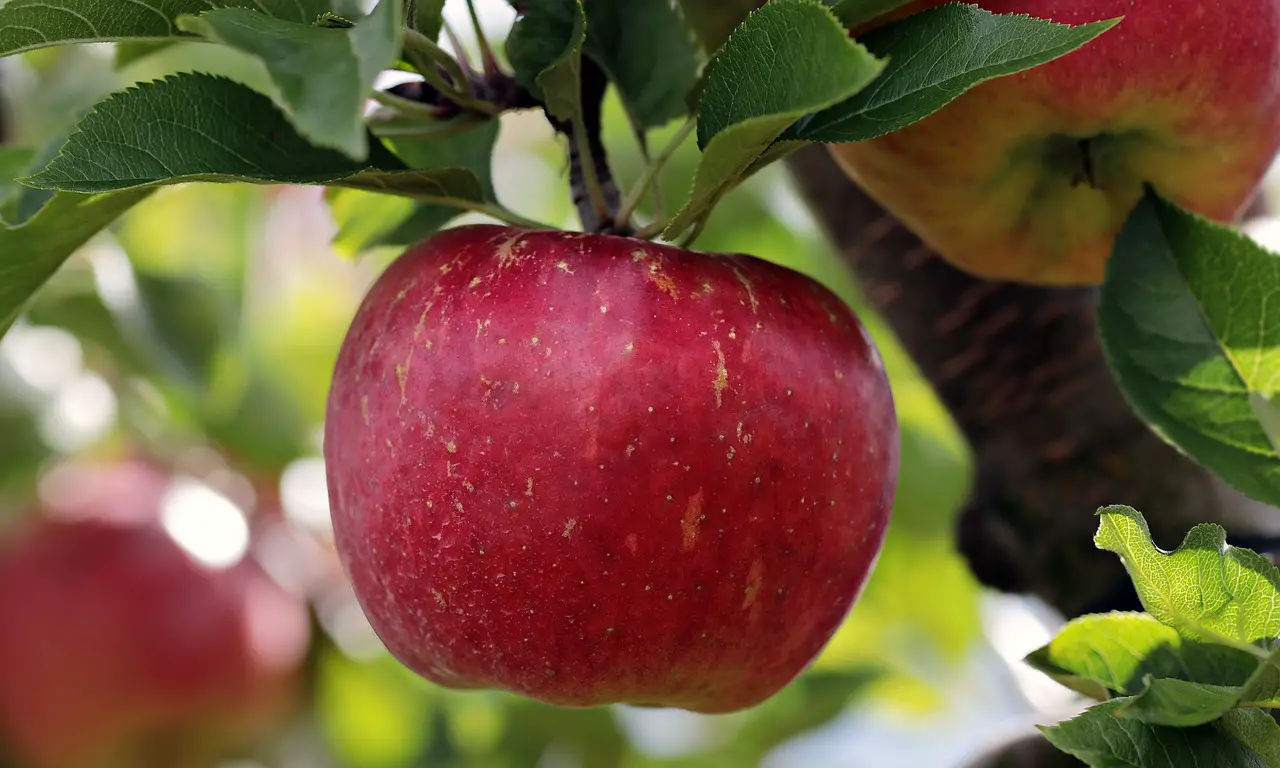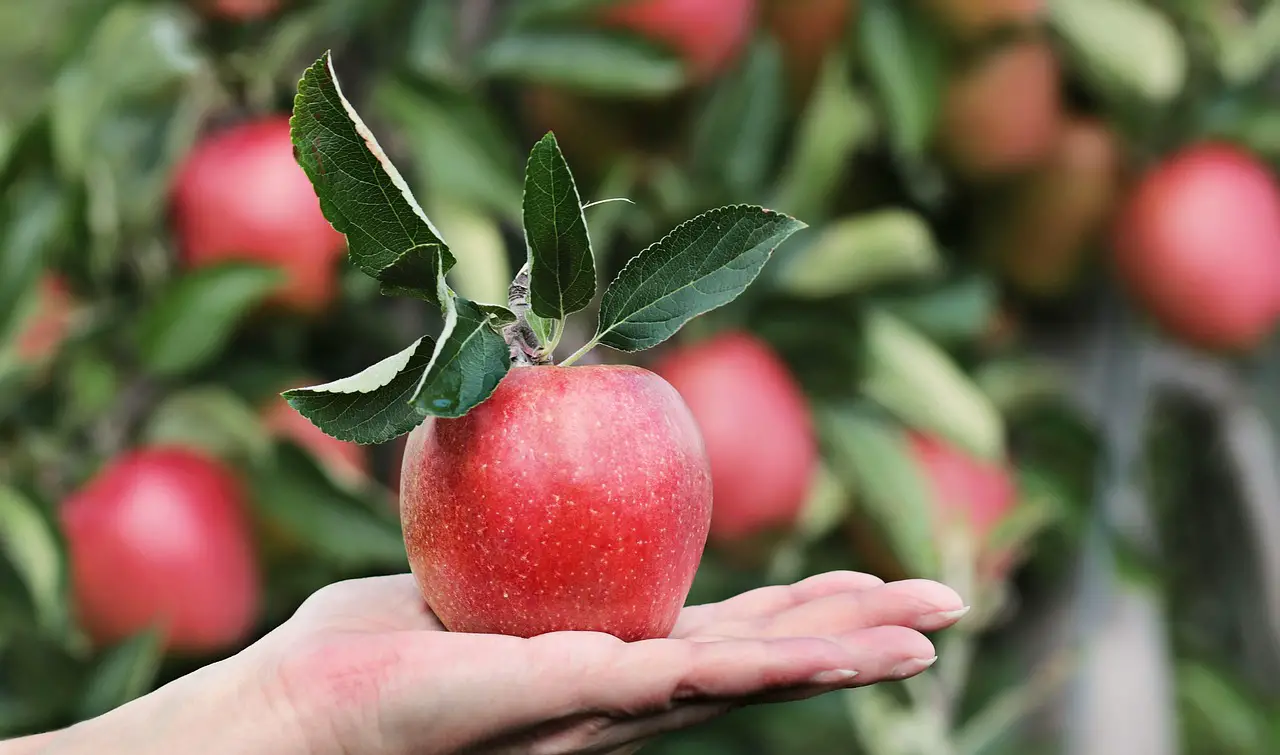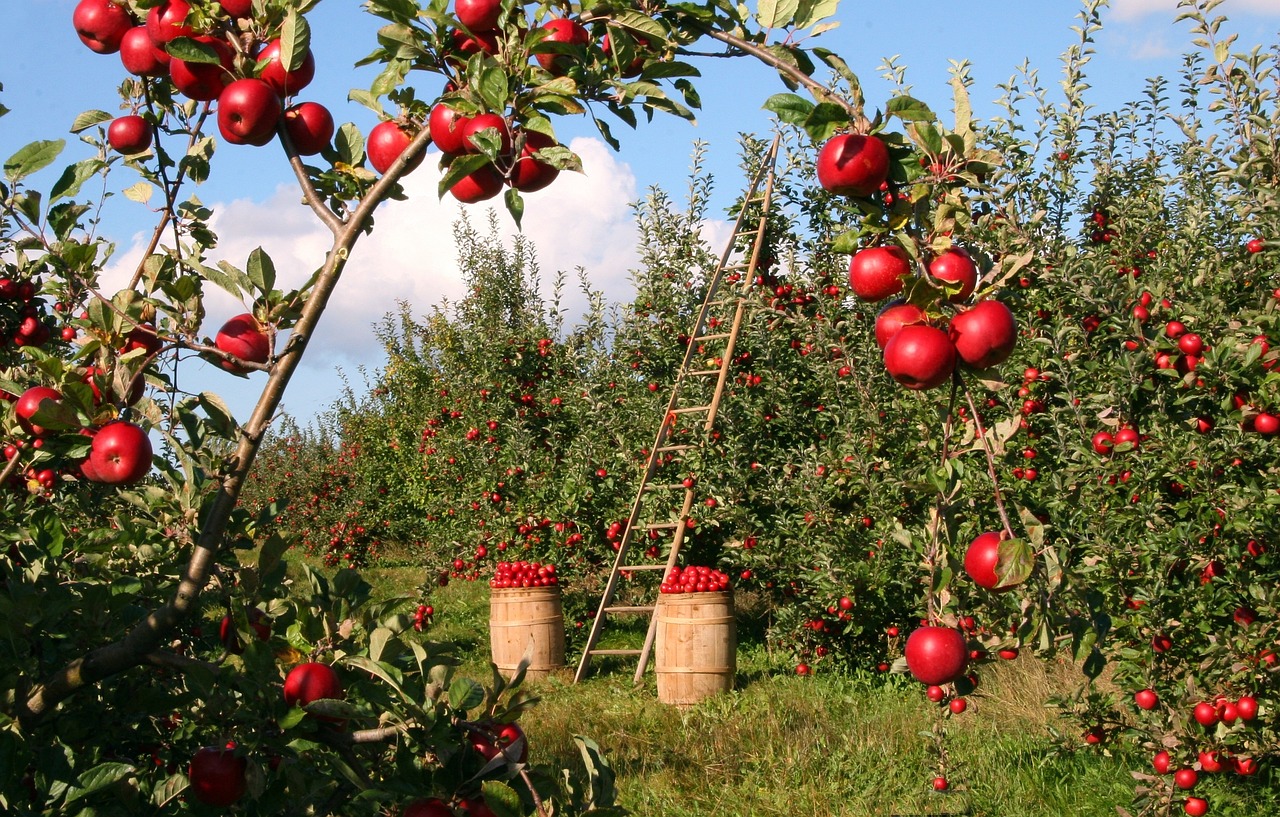Pruning apple trees can significantly benefit wildlife conservation efforts by enhancing biodiversity, promoting healthier tree growth, and providing essential habitats for various species.
Apple trees are not only valuable for their fruit but also play a crucial role in supporting local ecosystems. Properly maintained apple orchards can provide food and shelter for a variety of wildlife, including birds, insects, and small mammals. In recent years, there has been an increasing focus on sustainable agricultural practices that prioritize wildlife conservation. Pruning is one of the key techniques that can help achieve this goal. By strategically trimming apple trees, landowners can improve tree health while simultaneously creating a more inviting environment for wildlife.

Pruning involves removing specific parts of a tree, such as branches and leaves, to enhance its structure and growth. This practice is essential for apple trees as it helps to control their shape, promote better air circulation, and increase sunlight penetration. These factors contribute to a healthier tree that is more resilient against pests and diseases. Additionally, a well-pruned tree can produce higher quality fruit, benefiting both the farmer and the local ecosystem.
Benefits of Pruning Apple Trees for Wildlife
Pruning apple trees offers several benefits that can enhance wildlife habitats. These benefits include:
- Improved Habitat: Pruned trees have open canopies that allow sunlight to reach the ground. This encourages the growth of understory plants that provide food and shelter for various species.
- Increased Biodiversity: Healthy apple trees attract a diverse range of insects and birds. These species contribute to pollination and pest control, creating a balanced ecosystem.
- Food Sources: Fruit-bearing trees provide essential food resources for many wildlife species. By ensuring that trees remain healthy and productive, pruning supports these populations.
- Enhanced Nesting Sites: Pruning helps create suitable nesting sites for birds. The presence of dead wood or specific branch structures can encourage birds to nest in orchards.
In addition to these benefits, pruning can help manage invasive plant species that may compete with native flora. By maintaining an open environment within the orchard, native plants are given a chance to thrive, further supporting local wildlife.

Understanding the Pruning Process
The process of pruning apple trees requires knowledge and precision. Here are the main steps involved:
- Assessment: Before pruning, assess the tree’s overall health. Look for signs of disease or damage that might need immediate attention.
- Timing: The best time to prune apple trees is during late winter or early spring when they are dormant. This timing minimizes stress on the tree.
- Tools: Use clean, sharp pruning shears or saws to make clean cuts. This helps prevent infections and encourages quicker healing.
- Cutting Techniques: Focus on removing dead or diseased branches first. Then, thin out overcrowded areas to improve air circulation and light exposure.
- Final Touches: After pruning, clean up any debris and dispose of diseased material properly to prevent further issues.
The aim is to maintain a balance between tree health and the needs of local wildlife. Incorporating wildlife-friendly practices into pruning routines can foster a thriving ecosystem within apple orchards.
Key Considerations for Wildlife-Friendly Pruning
When pruning apple trees with wildlife conservation in mind, consider the following key points:

| Consideration | Description |
|---|---|
| Timing of Pruning | Avoid pruning during nesting season (spring) to protect bird populations. |
| Leaving Dead Wood | Retain some dead or standing wood in the orchard as it provides habitats for various insects and birds. |
| Diversity of Plant Life | Encourage native plants around the orchard to support a wider range of wildlife. |
| Pest Management | Utilize integrated pest management practices to reduce chemical usage, which can harm wildlife. |
By keeping these considerations in mind, orchard owners can create a balanced approach to pruning that supports both apple production and wildlife conservation efforts.
Techniques for Effective Pruning
Understanding the various techniques for pruning apple trees is essential for promoting wildlife conservation. Different approaches can enhance tree health, improve fruit production, and create habitats for wildlife. Here, we explore some effective pruning methods.
Thinning Cuts
Thinning cuts involve removing entire branches at their point of origin. This technique reduces the density of the tree canopy, allowing more sunlight to reach lower branches and the ground. Thinning cuts are beneficial for:

- Increasing airflow within the tree, which helps prevent diseases.
- Encouraging better fruit quality as sunlight penetrates more effectively.
- Creating open spaces that attract birds and beneficial insects.
Heading Cuts
Heading cuts involve trimming branches back to a bud or a smaller branch. This method stimulates new growth and can help maintain the desired shape of the tree. Benefits of heading cuts include:
- Promoting bushier growth, which can provide additional cover for wildlife.
- Encouraging flowering, which attracts pollinators and other beneficial species.
- Maintaining the tree’s height and size for easier management.
Seasonal Considerations for Pruning
Different seasons offer unique opportunities for pruning apple trees, each with its own benefits. Understanding these seasonal considerations can help maximize tree health and wildlife support.
Winter Pruning
Winter pruning occurs while trees are dormant. This timing is ideal because:
- The absence of leaves makes it easier to see the tree structure.
- Pruned areas heal faster before the growing season begins.
- Pests and diseases are less active during winter, reducing the risk of infection.
Summer Pruning
Summer pruning focuses on controlling growth and managing tree shape. Key advantages include:
- Reducing excessive growth that may block sunlight from reaching lower branches.
- Allowing for quick recovery as trees are actively growing.
- Helping to maintain a desirable tree shape while promoting fruit production.
The Role of Wildlife in Apple Orchards
Wildlife plays a vital role in maintaining the health of apple orchards. Certain species contribute to ecosystem balance, benefiting both trees and farmers. Here are some key wildlife interactions:
Pollinators
Pollinators, including bees, butterflies, and various insects, are essential for apple production. They facilitate the pollination process, which is crucial for fruit set. Creating a habitat that attracts these species enhances apple yield and quality.
Pest Control
Many birds and beneficial insects help control pest populations within orchards. By fostering these natural predators, orchard owners can reduce reliance on chemical pesticides. Some common pest controllers include:
- Ladybugs: They feed on aphids and other soft-bodied insects.
- Birds: Certain species consume caterpillars and beetles that can harm apple trees.
- Bats: They help control insect populations at night.
Caring for Pruned Trees
After pruning, proper care is essential to ensure that apple trees thrive. Here are some critical care practices:
- Wound Protection: Apply a protective sealant on larger cuts to prevent infection from pests or diseases.
- Irrigation: Ensure that trees receive adequate water, especially during dry spells, to support recovery and new growth.
- Nutrient Management: Use organic fertilizers or compost to enrich the soil and promote healthy growth.
- Pest Monitoring: Regularly check for signs of pests or diseases and address issues promptly with integrated pest management strategies.
Caring for pruned apple trees enhances their resilience and supports wildlife populations by maintaining a healthy ecosystem within the orchard.
Encouraging Biodiversity in Apple Orchards
Creating a thriving ecosystem within apple orchards is vital for both tree health and wildlife conservation. Encouraging biodiversity can enhance the resilience of the orchard, promote natural pest control, and support a variety of species. Here are several strategies to foster biodiversity.
Creating Habitat Features
Incorporating habitat features into the orchard landscape can provide essential resources for wildlife. Consider the following options:
- Brush Piles: Piling up branches and other organic matter can create shelter for small mammals, insects, and birds.
- Wildflower Strips: Planting native wildflowers around the orchard can attract pollinators and beneficial insects.
- Birdhouses: Installing birdhouses can provide nesting sites for various bird species, contributing to natural pest control.
- Water Sources: Adding small water features or birdbaths encourages wildlife to visit and thrive in the orchard.
Native Plant Management
Integrating native plants into the orchard ecosystem can significantly benefit local wildlife. Native plants offer food and shelter while requiring less maintenance than non-native varieties. Key points to consider include:
- Diversity of Species: Plant a variety of native species that bloom at different times to provide continuous food sources for pollinators and other wildlife.
- Soil Health: Native plants often have deep root systems that improve soil health and structure, contributing to overall orchard vitality.
- Reduced Pesticide Use: A diverse ecosystem can reduce pest outbreaks, minimizing the need for chemical treatments that may harm beneficial species.
The Impact of Organic Practices on Wildlife
Adopting organic farming practices in apple orchards can lead to healthier ecosystems. Organic methods focus on sustainability, reducing synthetic chemicals and enhancing soil health. Here are some key organic practices:
Natural Fertilizers
Using natural fertilizers such as compost, manure, or green manures improves soil fertility without harming wildlife. Benefits include:
- Increasing the availability of nutrients needed for healthy tree growth.
- Promoting beneficial microbial activity in the soil.
- Reducing the risk of chemical runoff into local water sources.
Pest Management Strategies
Organic pest management strategies are crucial for maintaining a balanced ecosystem. Some effective methods include:
- Cultural Practices: Rotate crops and diversify plantings to disrupt pest life cycles.
- Beneficial Insects: Introduce or encourage beneficial insects like ladybugs and lacewings to control pests naturally.
- Mechanical Controls: Use traps or barriers to physically prevent pest access to apple trees.
Monitoring Wildlife Populations
Regular monitoring of wildlife populations in apple orchards provides valuable insights into the effectiveness of conservation efforts. Understanding which species thrive and which may be declining can guide management decisions. Consider these monitoring methods:
Wildlife Surveys
Conducting wildlife surveys allows orchard owners to track species diversity and abundance. Surveys can be done through:
- Camera Traps: Set up motion-activated cameras to capture images of various wildlife species visiting the orchard.
- Field Observations: Spend time in the orchard observing animal behavior and interactions with the environment.
- Bird Counts: Participate in organized bird counting events to monitor avian populations within the orchard.
Data Collection
Collecting data on wildlife interactions with the orchard environment helps identify trends over time. Important data points include:
- The frequency of visits by various species.
- The types of plants that attract specific wildlife.
- The impact of pruning and other management practices on wildlife presence.
Sustainable Practices Beyond Pruning
Sustainability in apple orchards extends beyond pruning techniques. Implementing a holistic approach that considers all aspects of orchard management can enhance conservation efforts. Key sustainable practices include:
- Soil Conservation: Implement cover cropping and no-till practices to preserve soil health and prevent erosion.
- Water Management: Use drip irrigation systems to conserve water while ensuring trees receive adequate moisture.
- Ecosystem Restoration: Restore degraded areas within or around the orchard to promote biodiversity and improve habitat quality.
- Community Engagement: Educate local communities about the importance of conservation efforts and encourage involvement in sustainable practices.
By embracing a comprehensive approach to sustainability, orchard owners can create healthy environments that support both apple production and diverse wildlife populations.
Integrating Technology into Orchard Management
Modern technology can play a crucial role in enhancing wildlife conservation efforts within apple orchards. The integration of smart farming techniques helps orchard owners make data-driven decisions that improve both agricultural productivity and environmental sustainability. Here are some technological advancements that can be beneficial:
Precision Agriculture
Precision agriculture involves using technology to monitor and manage crop health and resources efficiently. Key components include:
- Drones: Drones can provide aerial imagery of orchards, helping farmers assess tree health, identify areas needing attention, and monitor wildlife activity.
- Soil Sensors: Soil moisture sensors can help determine when and how much water to apply, reducing waste and promoting healthy tree growth.
- Yield Mapping: Analyzing yield data allows orchard owners to understand which areas of their farm produce the best fruit, guiding future planting and care decisions.
Mobile Applications
Mobile applications designed for orchard management can assist in tracking growth, pest activity, and wildlife interactions. These apps allow farmers to:
- Record Observations: Document sightings of wildlife species and any signs of pests or diseases.
- Schedule Maintenance: Set reminders for seasonal tasks such as pruning, fertilizing, and monitoring.
- Access Resources: Gain instant access to best practices and guidelines for sustainable orchard management.
Collaborating with Conservation Organizations
Engaging with local conservation organizations can enhance wildlife conservation efforts in apple orchards. These partnerships can provide valuable resources and expertise. Consider the following collaborative approaches:
- Workshops and Training: Participate in workshops that focus on sustainable practices and wildlife management strategies.
- Research Projects: Collaborate on research initiatives that study the impacts of orchard management on local wildlife populations.
- Funding Opportunities: Look for grants and funding programs that support conservation efforts in agricultural settings.
Educating Consumers and Promoting Awareness
Raising awareness about the importance of wildlife conservation in apple orchards can benefit both the environment and the marketability of apples. Educating consumers about sustainable practices fosters a deeper connection between food production and environmental stewardship. Here are some strategies:
- Farm Tours: Invite consumers to visit orchards and learn about sustainable practices firsthand.
- Labeling Practices: Use labels that highlight eco-friendly practices, appealing to environmentally conscious consumers.
- Social Media Campaigns: Utilize social media platforms to share stories about wildlife interactions and conservation efforts in the orchard.
Final Thoughts
The practice of pruning apple trees not only supports agricultural productivity but also plays a significant role in wildlife conservation. By implementing thoughtful pruning techniques, promoting biodiversity, adopting organic practices, and leveraging technology, orchard owners can create habitats that support various species while ensuring healthy trees.
The holistic approach to orchard management emphasizes the interconnectedness of farming and nature. By fostering an ecosystem that values both apple production and wildlife conservation, growers contribute to a sustainable future. Through collaboration with local organizations, education of consumers, and the integration of modern technology, apple orchards can become exemplary models of sustainable agriculture.
Ultimately, the journey towards effective wildlife conservation in apple orchards is ongoing. As more orchard owners embrace these principles, the positive impact on local ecosystems will become increasingly evident, benefiting both the environment and communities. Together, we can ensure that apple trees thrive alongside the diverse wildlife they support, creating a harmonious balance that sustains both agriculture and nature.
